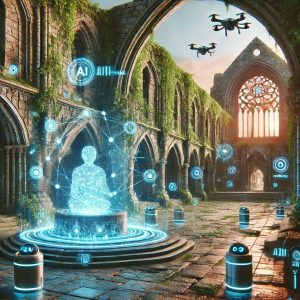We’re currently experiencing a fourth industrial revolution, which began early in the twenty-first century. This revolution brought about a much more mobile internet, as well as better, cheaper and smaller sensors that are enabling the development of new technologies. It has also seen the rise of machine learning and artificial intelligence.
However, this new industrial revolution isn’t only about smart machines. It encompasses a number of different fields as well, from material science to nanotechnology, energy to biology. What really separates this fourth industrial revolution from those that preceded it is that it merges these fields and connects them across digital, physical and biological platforms.
The fourth industrial revolution is moving at lightning speed. This makes perfect sense given that the modern world is more interconnected and richer in technology than ever before. Just consider the smartphone. The iPhone was introduced in 2007, and by 2015, a mere eight years later, there were around two billion smartphones. The whole revolution is having an outsized impact on our world by integrating a range of domains and disciplines. For example, fields such as 3D printing, computational design, materials engineering and synthetic biology are now being fused in ways that could enable creating entirely new organs for people who need them.
So what kind of new developments do we see?
The first, autonomous vehicles, refers to driver less cars, but also to trucks, boats and even aircrafts. These new forms of transportation are possible because of technological innovations like artificial intelligence and sensors, both of which are core to the fourth industrial revolution and are permeating all manner of fields. For instance, because of advanced sensor technology, drones can now navigate much more effectively in response to the environment and therefore can be used for a number of new tasks, like dropping medicine into war zones and helping farmers measure their crops’ need for water or fertilizer. Or even a stunning lightshow as below video. It can also replace the fireworks for example. What do you think about this?
The second physical trend of this industrial revolution is 3D printing, or, as it’s sometimes called, additive manufacturing. This new technology has been enabled by advanced computing, including digital drawing and modeling. Incredibly, 3D printing is already being used in fields as diverse as medicine and energy production, producing everything from micro medical implants to massive wind turbines.
The third trend, advanced robotics, is spreading like wildfire across every industry, from nursing to precision agriculture. Robots are becoming increasingly adapted to their environments as they no longer require autonomous instruction and can instead pull data from the cloud. They can even collaborate with humans.
Lastly, new materials are also making a splash; they’re stronger, lighter, recyclable and more adaptive than the materials of the past. Some can even heal or clean themselves.
Just take graphene, a newly discovered nanomaterial. It’s 200 times stronger than steel and a million times thinner than a single human hair. It’s also a very efficient conductor of both electricity and heat.
But not every trend in the fourth industrial revolution is physical. In my next Blog I will tell you more about the ethereal trends. Let me know what you think about this:)
Love, Marietta


